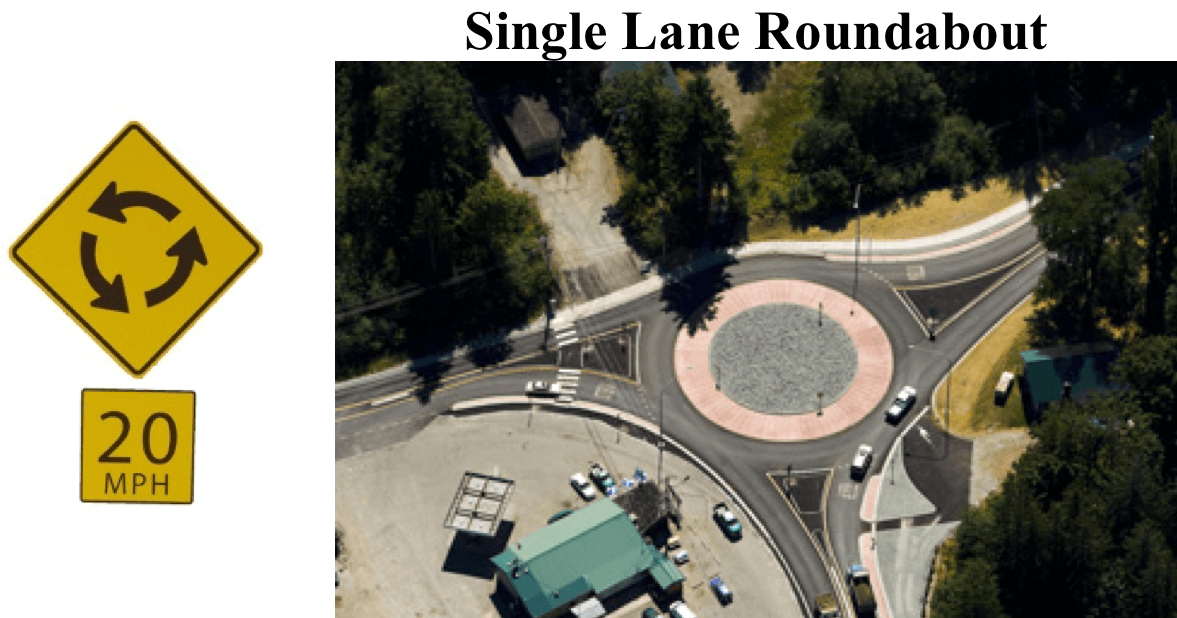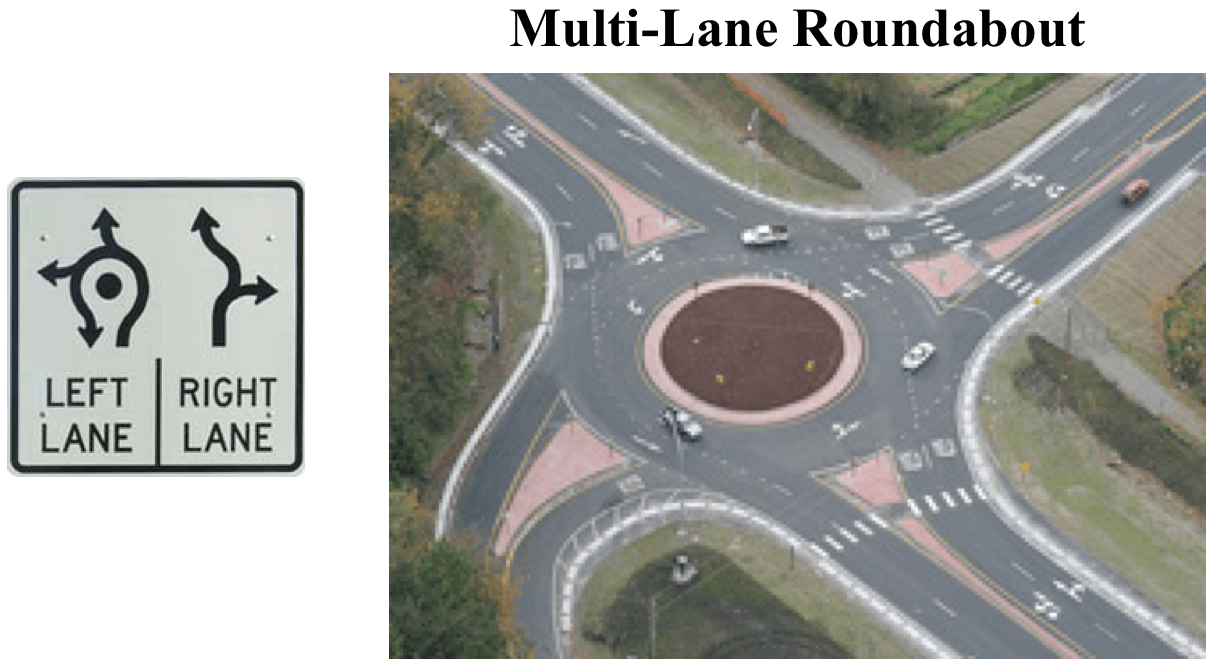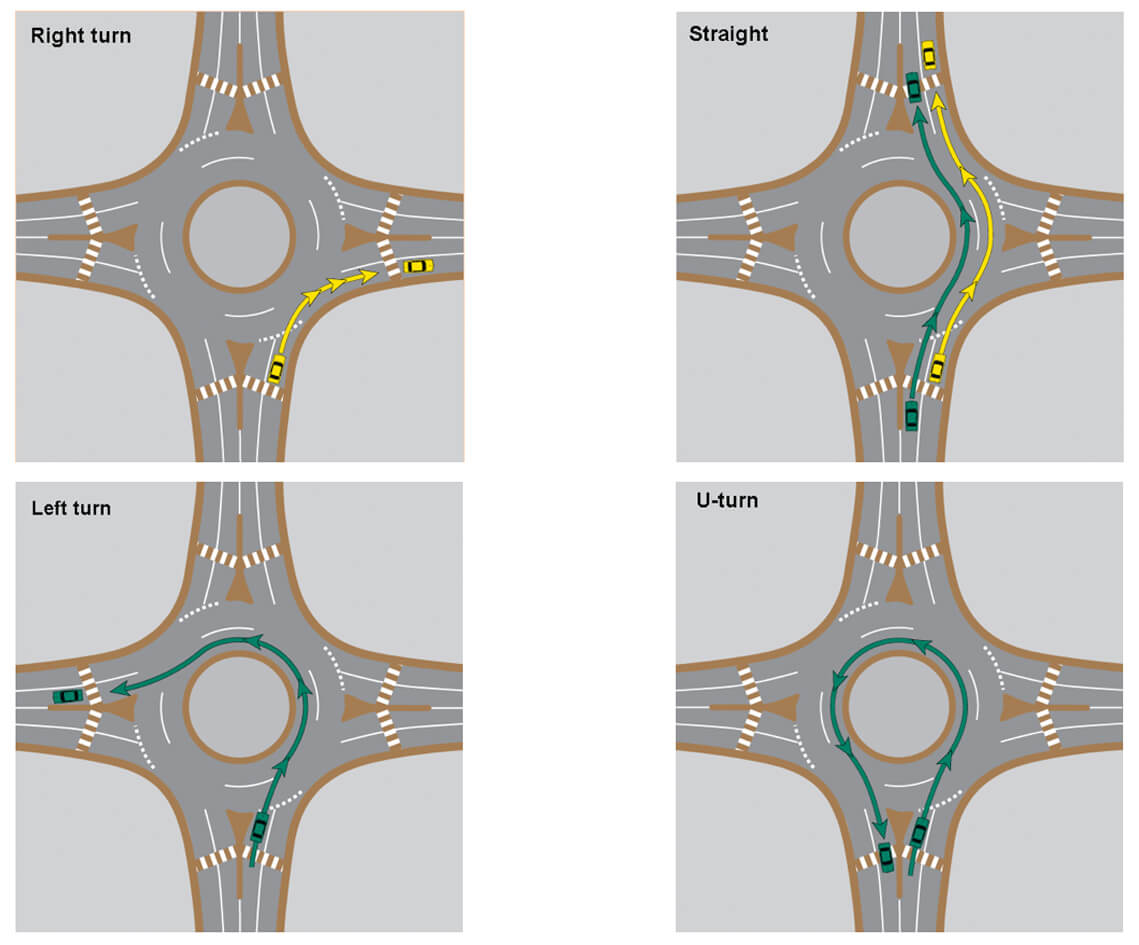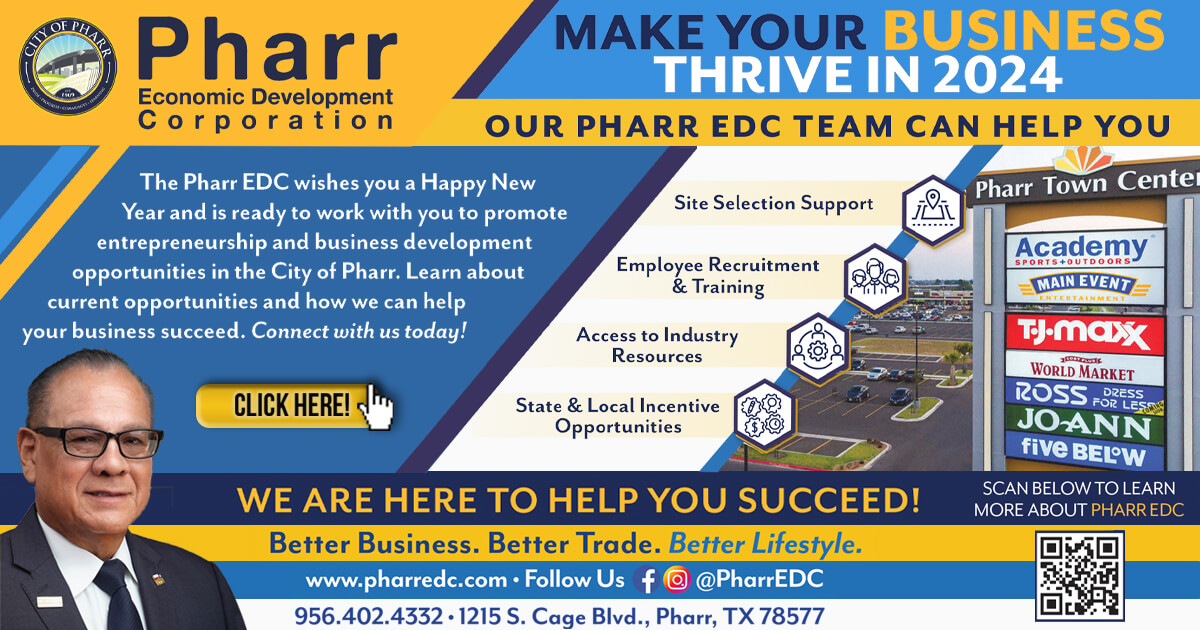 By Jim Wright
By Jim Wright
Texas Border Business
Roundabouts have been familiar to European drivers for many years and they are now becoming popular with traffic designers in the US. Roundabouts are designed to make intersections safer and more efficient for drivers, pedestrians and cyclists. There are two types of roundabouts: Single-lane roundabouts and multi-lane roundabouts.
There are a few key things to remember about driving roundabouts:
- Yield to other drivers in the roundabout.
- Do not stop in the roundabout.
- Stay in your lane; do not change lanes.
- Avoid driving next to oversize vehicles.

As you approach a roundabout, you will see a notification sign with an advisory speed limit for the roundabout.
Slow down as you approach the roundabout, and watch for pedestrians in the crosswalk. Continue toward the roundabout and look to your left as you near the yield sign and dashed yield line at the entrance to the roundabout.
Yield to traffic already in the roundabout.
Once you see a gap in traffic, enter the circle and proceed to your exit. If there is no traffic in the roundabout, you may enter without yielding.
Look for pedestrians and use your turn signal before you exit, and make sure to stay in your lane as you navigate the roundabout.

In a multi-lane roundabout, you will see two signs as you approach the intersection: The yellow “roundabout ahead” sign and a black-and-white “lane choice” sign. You will need to choose a lane prior to entering the roundabout.
You choose your lane in a multi-lane roundabout the same way you would in a traditional multi-lane intersection. To go straight or right, get in the right lane. To go straight or left, get in the left lane. Drivers can also make U-turns from the left lane.
The graphics below show what turns can be made in multi-lane roundabouts. The arrows in yellow show the movements that can be made from the right lane and the arrows in green show movements that can be made from the left lane.
 Trucks/Oversize Vehicles & Roundabouts
Trucks/Oversize Vehicles & Roundabouts
Roundabouts are designed to accommodate vehicles of all sizes, including emergency vehicles, buses, farm equipment and semi-trucks with trailers. Oversize vehicles and vehicles with trailers may straddle both lanes while driving through a roundabout.
Many roundabouts are also designed with a truck apron, a raised section of pavement around the central island that acts as an extra lane for large vehicles. The back wheels of the oversize vehicle can ride up on the truck apron so the truck can easily complete the turn, while the raised portion of concrete discourages use by smaller vehicles.
Because large vehicles may need extra room to complete their turn in a roundabout, drivers should remember never to drive next to large vehicles in a roundabout.
Jim Wright is the Corporate Safety Director for Terracon Consultants, Inc. He holds a Bachelor’s degree in Chemistry and a Master’s degree in Industrial Hygiene. Jim began a career in the drilling industry in 1991 as a project safety officer for safety and environmental monitoring on Superfund sites for an international drilling contractor.













